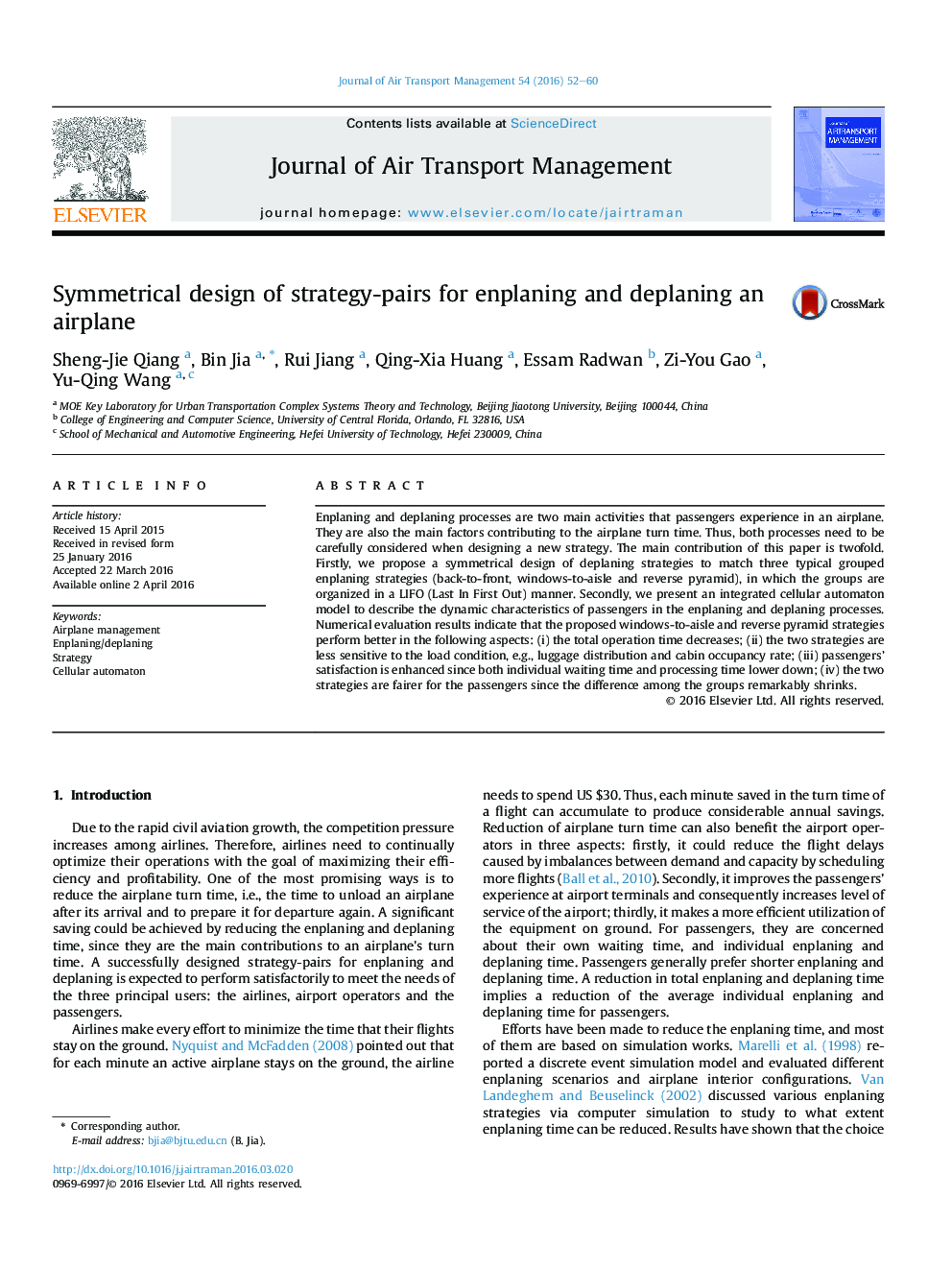| Article ID | Journal | Published Year | Pages | File Type |
|---|---|---|---|---|
| 1030659 | Journal of Air Transport Management | 2016 | 9 Pages |
•Both enplaning and deplaning processes are considered when designing strategies.•The dynamics of passengers in cabin are described in a cellular automaton model.•Three symmetrical designed strategy-pairs (P-WA, P-RP and PBF) are proposed.•The P-WA and P-RP reduce airlines costs and improve passenger's satisfaction.•Implementation methods for P-WA and P-RP and their surrogations are given.
Enplaning and deplaning processes are two main activities that passengers experience in an airplane. They are also the main factors contributing to the airplane turn time. Thus, both processes need to be carefully considered when designing a new strategy. The main contribution of this paper is twofold. Firstly, we propose a symmetrical design of deplaning strategies to match three typical grouped enplaning strategies (back-to-front, windows-to-aisle and reverse pyramid), in which the groups are organized in a LIFO (Last In First Out) manner. Secondly, we present an integrated cellular automaton model to describe the dynamic characteristics of passengers in the enplaning and deplaning processes. Numerical evaluation results indicate that the proposed windows-to-aisle and reverse pyramid strategies perform better in the following aspects: (i) the total operation time decreases; (ii) the two strategies are less sensitive to the load condition, e.g., luggage distribution and cabin occupancy rate; (iii) passengers’ satisfaction is enhanced since both individual waiting time and processing time lower down; (iv) the two strategies are fairer for the passengers since the difference among the groups remarkably shrinks.
